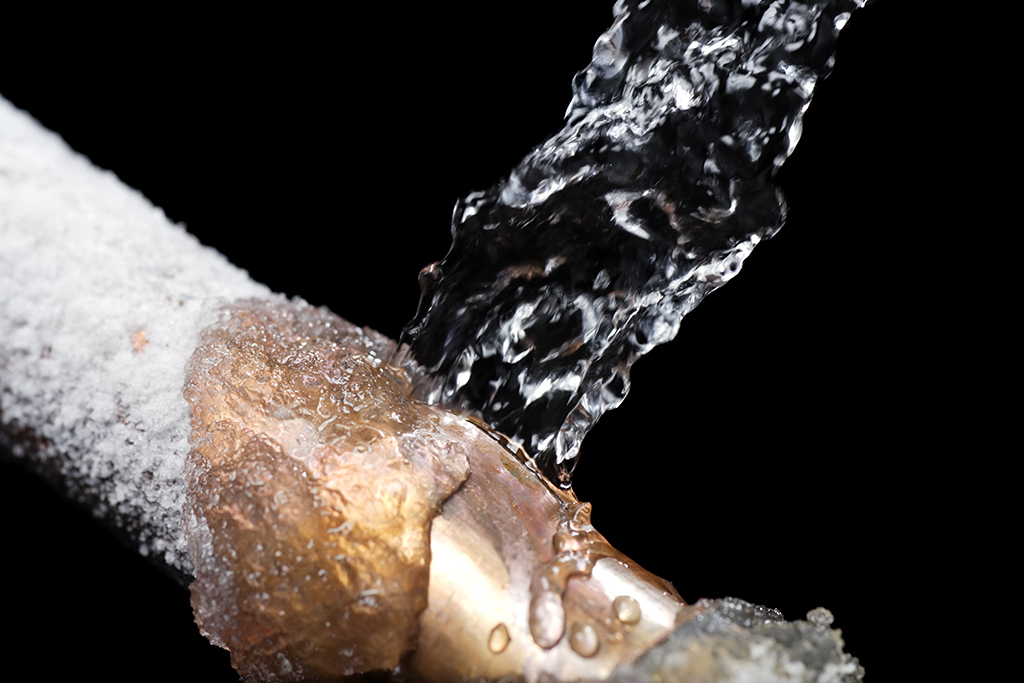Smart Winterizing Solutions: Five Techniques to Avoid Pipe Bursts
Smart Winterizing Solutions: Five Techniques to Avoid Pipe Bursts
Blog Article
Were you looking for info concerning How to Prevent Frozen Pipes?

All homeowners that stay in temperate environments must do their finest to winterize their pipelines. It is something you need to do during fall prior to deep wintertime truly begins. Failure to do so can spell disaster like frozen, broken, or burst pipes. Right here are some helpful winterizing hacks to keep your plumbing system safeguarded even if the weather exterior is shocking.
Attempt a Hair Dryer or Warmth Gun
When your pipelines are nearly freezing, your reliable hair dryer or warm gun is a godsend. If the warm towels do not aid remove any working out ice in your pipes, bowling warm air directly into them may help. You might finish up damaging your pipelines while attempting to thaw the ice.
Open Up Cupboard Doors Hiding Plumbing
When it's cool outside, it would certainly be useful to open up cupboard doors that are camouflaging your pipelines. Doing this tiny method can keep your pipelines cozy and restrict the potentially hazardous outcomes of freezing temperature levels.
Take Time to Wrap Exposed Piping
One clever and simple hack to heat up cold pipelines is to wrap them with warm towels. You can cover them initially with towels. After protecting them in place, you can put boiling water on the towels. Do it gradually to allow the towels soak up the liquid. You can additionally use pre-soaked towels in hot water, just don't fail to remember to put on safety handwear covers to secure your hands from the warmth.
Turn On the Faucets
When the temperature decreases as well as it appears as if the icy temperature level will certainly last, it will assist to turn on your water both indoors as well as outdoors. This will certainly maintain the water moving via your plumbing systems. Additionally, the motion will decrease the freezing procedure. Especially, there's no need to transform it on full blast. You'll wind up losing gallons of water this way. Rather, aim for regarding 5 drops per minute.
Shut Off Water When Pipelines are Frozen
Turn off the primary water shutoff right away if you see that your pipelines are entirely frozen or practically nearing that stage. You will normally find this in your basement or laundry room near the heater or the front wall closest to the street. Transform it off immediately to avoid more damages.
With even more water, even more ice will certainly stack up, which will ultimately lead to burst pipelines. If you are unclear regarding the state of your pipes this winter, it is best to call a specialist plumber for an examination.
All home owners who live in temperate environments should do their ideal to winterize their pipes. Failing to do so can spell catastrophe like frozen, broken, or burst pipes. If the warm towels do not aid displace any kind of clearing up ice in your pipes, bowling hot air straight right into them may help. Transform off the primary water shutoff instantly if you discover that your pipelines are totally frozen or virtually nearing that stage. With even more water, even more ice will certainly load up, which will eventually lead to burst pipes.
PREVENT YOUR PIPES FROM FREEZING THIS WINTER
A Leading Cause of Property Damage
When the weather is taking a deep nose dive into the cold dreary days, the risk of your pipes freezing and potentially bursting skyrockets. Unfortunately, during these cold dreary months, burst pipes are the most common denominator for property damage. The pipes that are most at the risk are those that are in areas where it is most cold in your home. For instance, pipes located in interior places such as basements, attics, and your garage. Unfortunately, that doesn’t mean that the pipes running through your cabinets or exterior walls can’t freeze. Good news, however, is that you can do things to help prevent pipes from freezing.
How to Prevent Pipes From Freezing
Once the temperature starts to drop during the winter, you should be taking the proper measures needed to ensure that your pipes stay warm and that there is circulation of water through them. Some steps that experts may recommend could go against your better judgement when it comes to saving water and heat. However, it would go without saying that when expenses are compared, damaged pipes could put a bigger dent in your wallet than a water bill.
What Can I Do?
Keep your garage door closed. This is very important, especially if you have water supply lines running through your garage. Open your kitchen and bathroom cabinets to allow warm air to circulate through them. Allow air circulation throughout your home. Keeping the interior doors open will once again allow the warm air to circulate inside your home. Ensure your thermostat is running the same temperature throughout the night and day. If you plan to be away from home during the cold months, set your temperature no lower than 55° F. This should provide enough heat to keep the pipes warm and prevent any remaining water inside the pipes from freezing. For more of a long-term solution, add insulation to attics, basement, and other crawl spaces around your home. By allowing your faucet to drip, it will alleviate pressure in the system. This is important because the pressure that is created between the blockage and the faucet can potentially cause the pipes to burst. Allowing the faucet to drip will prevent the pressure from building up, therefore keeping the pipes from bursting. Seal any cracks, openings, and crawl spaces around your home to prevent cold air from coming inside. This keeps your pipes-not to mention your home-warmer and less susceptible to issues caused by freezing temperatures. For the pipes in your home that are easily accessible, applying electrical tape to them might prevent them from freezing over. This is a quick fix, as you can apply the tape directly to the pipe. There are two options for heating tapes. One turns on and off by itself when it senses heat is needed. The other type of heating tape needs to be applied when heat is needed and removed when not necessary. If you have exposed pipes in your home, you can check this website to take a look at a few options that would be available at a shop near you.

As an avid person who reads on Prevent Freezing and Bursting Pipes, I thought sharing that piece of content was really useful. If you please take a moment to share this blog entry if you liked it. Thank-you for going through it.
Rely on our emergency expertise. Report this page